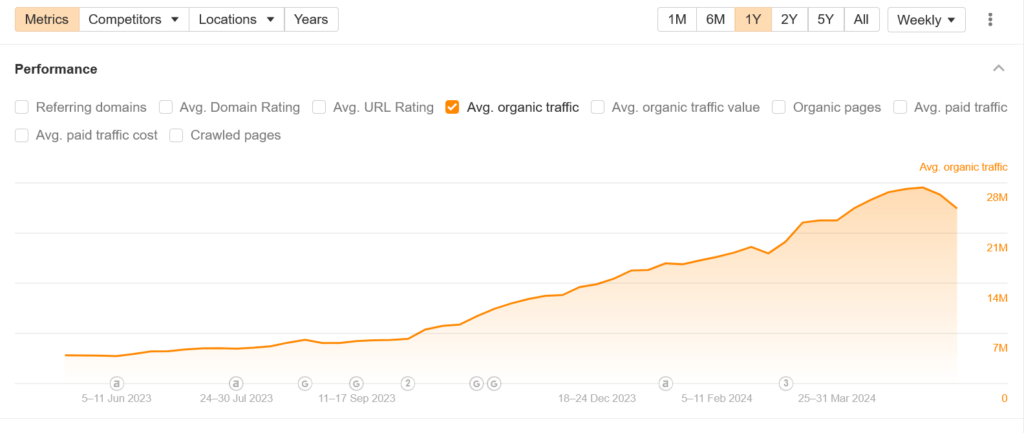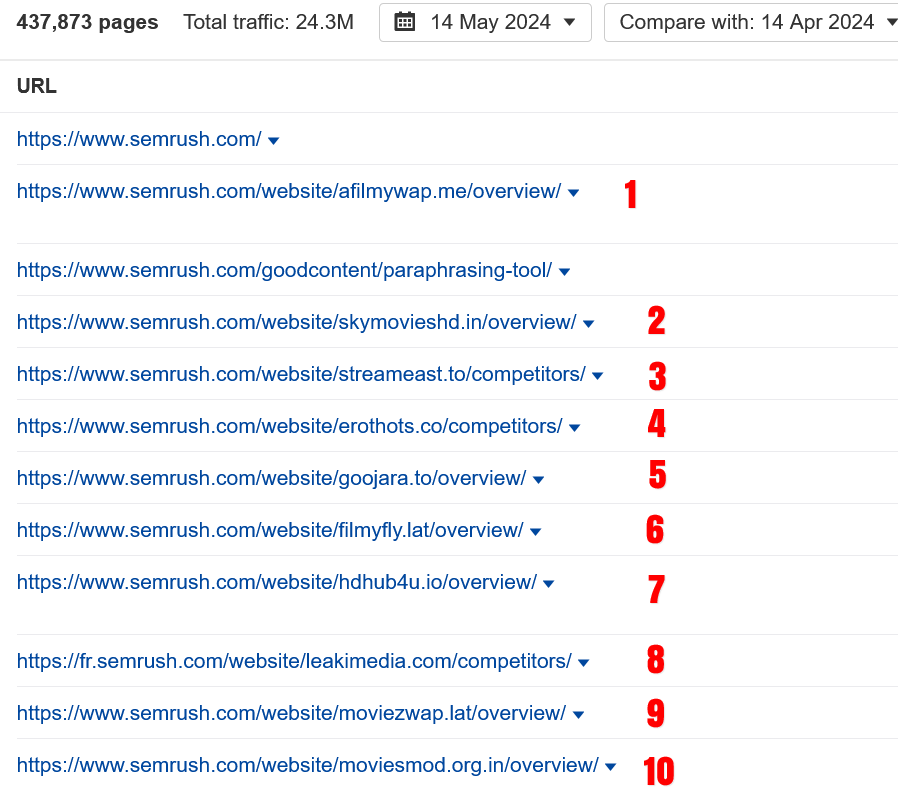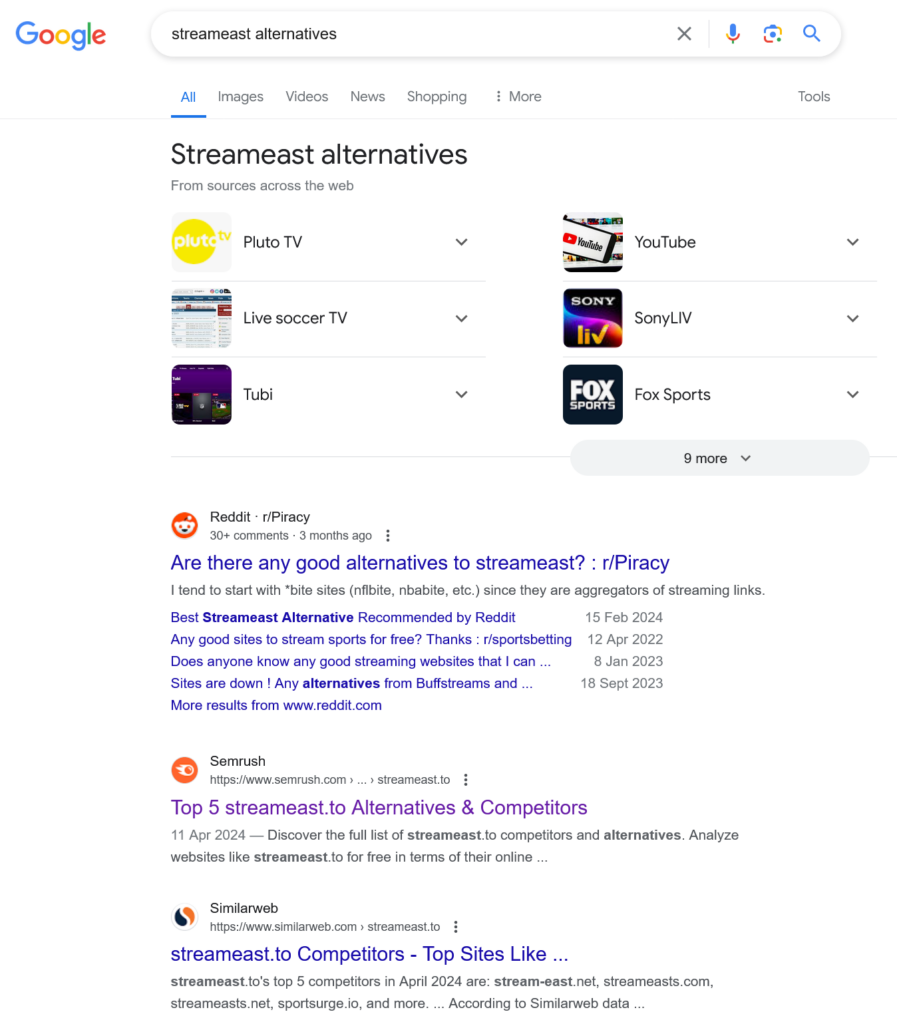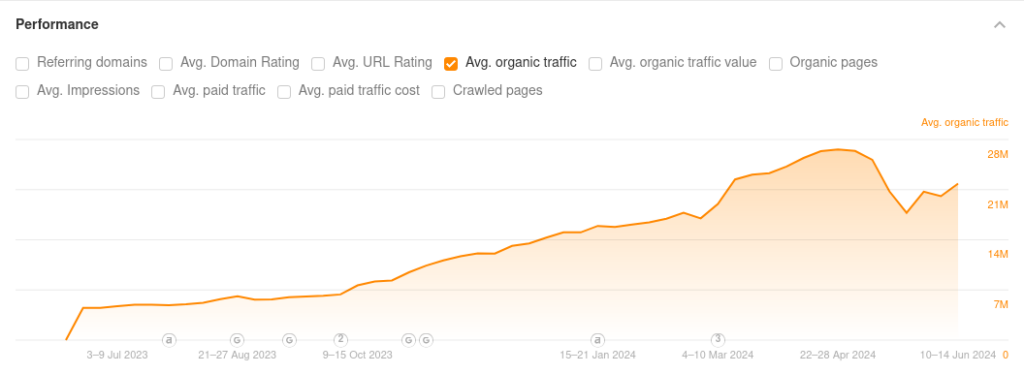SEMRush is engaging in the most common type of SEO spam – scaled content abuse. In this post, I will detail how and why it matters.
But before I do that, let’s look at some interesting stats about SEMRush traffic.
Here is a 6 month snapshot of SEMRush traffic…
The organic traffic of the site went from 11.7 Million to between ~28 Million. An increase of ~139%.
In-fact, a 1 year snapshot looks even more appealing – the data is almost scary.

Their traffic grew from 3.9 Million to 28 Million organic visitors. That’s a 617% growth.
For context, this data comes from Ahrefs. This data may not be accurate because Ahrefs has no way of determining SEMRush traffic other than make reasonable estimations based on search volume of keywords and estimation of traffic they receive from these keywords.
Google recently released their site authority abuse update and targeted sites that were abusing their authority, mostly subdomains on authority sites listing coupons via third party vendors. A part of this release was also the “scaled content abuse”.
Here is the press release from Google on 5th March specifically the scaled content abuse
We’ve long had a policy against using automation to generate low-quality or unoriginal content at scale with the goal of manipulating search rankings. This policy was originally designed to address instances of content being generated at scale where it was clear that automation was involved.
Today, scaled content creation methods are more sophisticated, and whether content is created purely through automation isn’t always as clear. To better address these techniques, we’re strengthening our policy to focus on this abusive behavior — producing content at scale to boost search ranking — whether automation, humans or a combination are involved. This will allow us to take action on more types of content with little to no value created at scale, like pages that pretend to have answers to popular searches but fail to deliver helpful content.
Google Press Release
Since October 2023 Google has released
- October Spam Update
- October Core Update
- November Core Update
- November Reviews Update
- March 2024 Core Update
- May Site Reputation Abuse
So it should be deduced that SEMRush could be doing something right. If none of these Google updates impacted SEMRush then it must be doing everything by the SEO playbook.
I decided to take a deep dive to find out what was the cause of this massive increase in organic traffic.
Taking a look at the top pages report on Ahrefs, things become increasingly clear that 10 out of the top 12 pages are a form of SEO spam. More specifically they are scaled content abuse spam.

Almost all pages are about websites that help either illegally stream pirated movies or help with illegal download of media.
So why does SEMRush want to rank for websites that help with illegal movie downloads ? Is this the audience that is also buying their software ?
I might argue that this is clearly a landing page designed to sell me SEMRush services by injecting themselves for branded searches. If anything, this is an abuse of the site authority to cannibalize other brand traffic. Google’s description in their blog accurately describes this technique as “scaled content abuse”
This page also clearly engages in what I call “3rd party brand traffic cannibalization. It’s a process whereby SEMRush tries to own search positions and traffic for a brand they do not own.
But, if you pay close attention, the SEO trickery becomes evident..
The page title contains the words [March 2024] to make it appear that it has been recently updated to search engines. Having worked with similar sites before , it is my belief that much of those site pages have been artificially generated to fit a template specifically designed to create this form of spam.
Here is a document outline of one of these pages.
Notice the most common types of search queries appended to the site name this page is ranking about…
- Competitors
- Alternatives
- Traffic journey
- Visitor engagement
- Paid website traffic
- Backlink stats
- Referring domains
Now using two different examples, I will show you how these artificially generated pages are cannibalizing dead brands or brands that have some traction.
Here is another example for the term “socialmediagirls”
Here is what Google returns when searching for “Streameast alternatives

And this is barely scratching the surface…
Here are some more interesting stats I found on report from Ahrefs about these pages that SEMRush seem to artificially generate:
- 450K top pages tracked on SEMRush that are receiving traffic, almost 390K pages were designed to target capitalizing on other branded searches
- 96 results in the top 100 pages represented sites that helped download illegal movies or stream illegal movies online or are related to adult industry
This form of SEO spam is common amongst sites that list alternative software or alternatives. These sites generate a ton of artificial content to spam search engines with low or no value content.
Overall – there is no value added to the search query of a user with these type of artificially generated pages.
Jun 2024 update – A few redditors are arguing that this is programmatic SEO. Their argument seems to be that the programmatic SEO with first party data is perfectly acceptable. Of course, pSEO with first party data is acceptable form when it adds value to a user search query. Consider the case of Zapier which has some form of pSEO.
Many of them are also missing the point that the very definition of scaled content on the Google press release reasonably surmises SEMRush spam.

A quick look at SEMRush stats on Ahrefs suggests that the traffic declined with maximum decline in US based traffic after writing this post. However, the decline doesn’t seem to have snowballed with some recovery.

